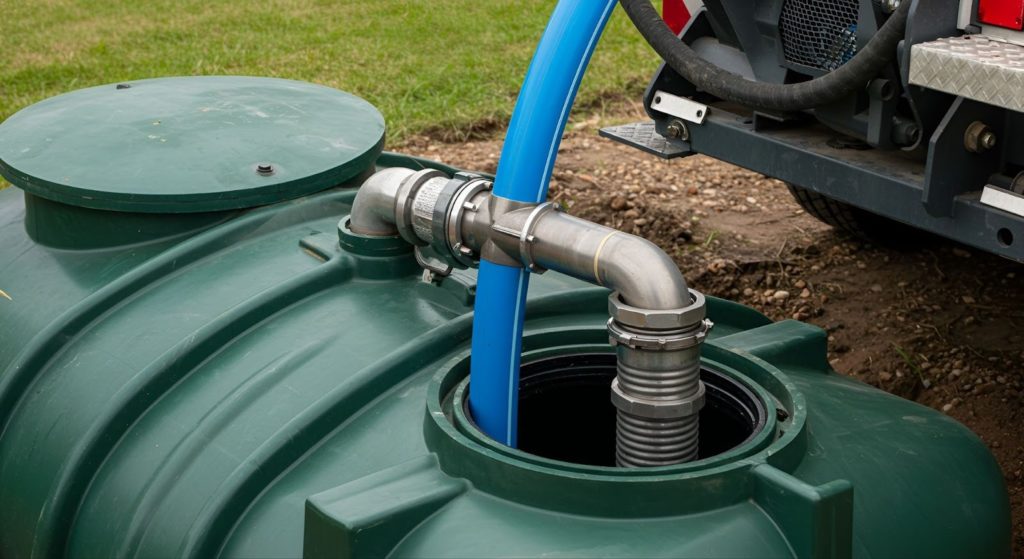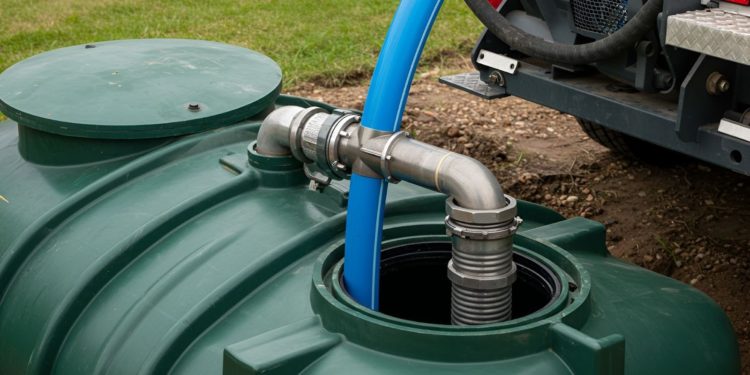For most homeowners, the septic system works silently underground, forgotten until a drain gurgles, an odor appears, or wastewater backs up. While you may have heard the standard “pump every three to five years” advice, this one-size-fits-all approach can be misleading.
The truth is, the ideal schedule is unique to your home. This guide will cut through the myths and break down the real factors, from tank size to daily habits, that determine how often you truly need to empty your septic tank.
The Critical Need for Septic Tank Emptying
Septic tank emptying is the vital service that maintains this delicate ecosystem. Over time, the sludge and scum layers thicken, reducing the tank’s efficiency and holding capacity.
A professional septic tank emptying service uses specialized vacuum trucks to thoroughly remove all accumulated waste from your tank, restoring its proper volume and function. This crucial maintenance prevents solids from escaping into and clogging the drain field, which is the most common and expensive point of failure in any septic system.
Key Factors That Determine Your Septic Tank Emptying Schedule
Several crucial factors influence how often your property will require septic tank emptying services. In this way, you can create a personalized maintenance plan rather than relying on a generic timeline.
1. Tank Capacity
The size of your tank is the fundamental starting point. Under the same usage conditions, a 1,000-gallon tank will fill with solids considerably faster than a 1,500-gallon tank. Knowing your tank’s capacity is essential for accurate planning.
2. Household Size and Water Usage
This is the most direct factor. The number of people living in your home directly correlates to the volume of wastewater and solid waste entering the system. More occupants generally mean more showers, laundry loads, and toilet flushes, all of which accelerate the accumulation of sludge and scum.
3. Waste Disposal Habits
What goes down your drains has a massive impact. The frequent use of a garbage disposal significantly increases the amount of solid organic matter entering the tank, necessitating more frequent septic tank emptying. Similarly, flushing non-biodegradable items (e.g. feminine hygiene products, wipes, or paper towels) can clog the system and increase the solid waste load.
4. Overall Wastewater Volume
The total amount of water that flows into the tank matters. This includes everything from long showers and frequent baths to leaky faucets and multiple daily laundry loads. High-efficiency appliances can reduce this volume, while older, less efficient fixtures will increase it.
A Practical Guide to Scheduling Your Septic Tank Emptying
Knowing the factors that affect your system is important, but how do you translate that into a practical maintenance schedule? Follow these steps to know the optimal timing for your septic tank emptying service.
Step 1: Know Your System
Locate your tank’s access lids and review your home inspection records to confirm its size. This basic information is the foundation for your maintenance plan.
Step 2: The Inspection Method
The most accurate way to determine the need for septic tank emptying is to measure the sludge and scum layers. Professionals use a tool called a “sludge judge” to perform this assessment. The general rule is that pumping is needed when the combined depth of sludge and scum reaches approximately one-third of the liquid depth in the tank.
Step 3: Establish a Baseline
If you’re unsure of your tank’s history, schedule a professional inspection. A technician can measure the accumulation levels and provide a data-driven recommendation for your next septic tank emptying service. This initial assessment is more cost-effective than emergency repairs.
Step 4: Implement a Monitoring Schedule
After your initial septic tank emptying, establish a regular monitoring routine. For most households, an annual quick check of sludge levels helps track accumulation rates and allows you to adjust your pumping schedule proactively rather than reactively.

General Guidelines for Septic Tank Emptying Frequency
While your specific situation is unique, the following table provides a general reference point for how often the average household might require septic tank emptying services. These estimates assume no garbage disposal use and standard water conservation practices.
| Tank Capacity (Gallons) | Household Size (People) | Estimated Emptying Frequency |
| 900 – 1,000 | 1 – 2 | Every 5 – 7 years |
| 900 – 1,000 | 3 – 4 | Every 3 – 4 years |
| 1,200 – 1,500 | 4 – 5 | Every 3 – 5 years |
| 1,200 – 1,500 | 6+ | Every 2 – 3 years |
| Any size tank | With garbage disposal | *Increase frequency by 1-2 years* |
Homes with garbage disposals should consider more frequent septic tank emptying, typically every one to two years, depending on usage. Older adults or vacation homes with intermittent use may extend these timeframes, while large families with high water usage may need more frequent service.
These guidelines are a starting point rather than a definitive schedule. The most reliable approach combines these general timeframes with regular professional assessments of your tank’s actual conditions.
Bottom Line
Septic tank emptying is essential protection. By moving beyond a generic schedule and basing service on your tank’s actual needs, you make a small investment that safeguards your property, prevents environmental contamination, and avoids the exorbitant cost of emergency repairs or a full system replacement.












































































